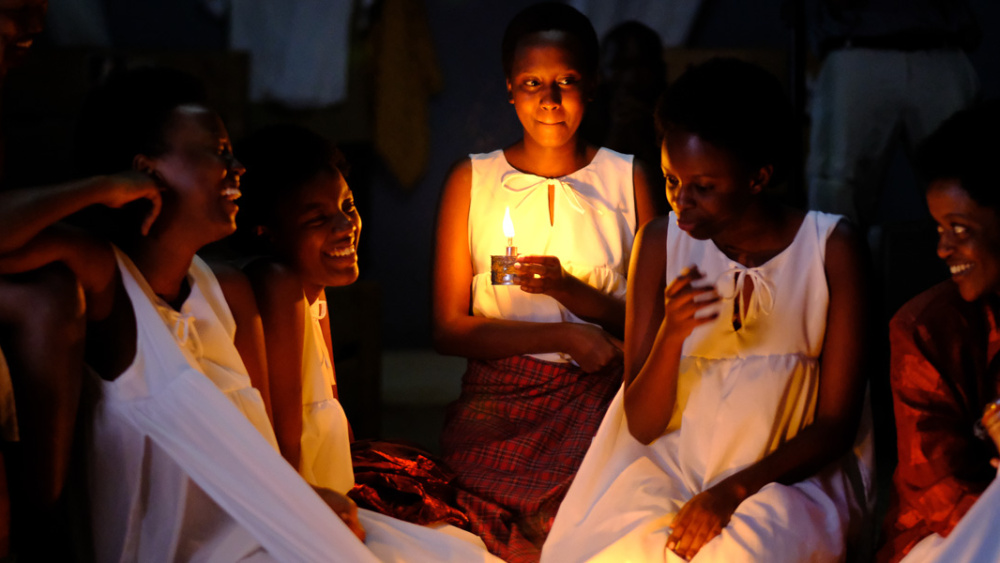Review by Zach Dennis
We are all beholden to our environments — whether we want to be or not.
The girls (on their way into becoming young women) who inhabit the Our Lady of the Nile boarding school are unaware of this fact, but it won’t take long for them to learn. For most of us, we engage with lessons in time but never in the fashion as these girls do in the latest film from director Atiq Rahimi, Our Lady of the Nile.
The school sits in the forest of Rwanda — hidden from the world as a way to become more engrossed in the faith teachings. It doesn’t stop the outside world from coming in. One of the girls, Frida, has a family that works in the international relations section of the Rwandan government, and she tells the others about her romance with the Ambassador of Zaire — someone she goes and visits when everyone is offered a quick reprieve from the woods.
Outside influences are repressed as much as possible while the girls are within the confines of the school. Its leader, Mother Superior, forbids allowing the outside to creep in as an effort to allow the girls more chances to get closer to God, but even she can’t keep them from the curiosity of the local French coffee plantation owner, Fontenaille, who catches the eyes of Veronica and Virigina, the school’s only two Tutsi students.
Upheaval between the Tutsis and the Hutu is manifesting outside, but the girls aren’t aware of that. Instead, they enjoy the fancy foods Frida brings from her ambassador love, they explore the forest and its inhabitants, and in the case of Veronica, they learn more about their ancestral inheritance within these lands. Fontenaille is an aficionado of Tutsi culture, as relics and art pieces scatter his plantation home. He takes both Veronica and Virginia to the back of his home where he shows them the spot where he believes he has uncovered a great queen of Tutsi lineage — a Nefertiti in her own right.
But an appreciation for this land is not felt by everyone. Gloriosa finds the entire enterprise repulsive and through the help of her father (a political opposer of the Tutsis), she begins to infect the school and build it up in the Hutu image. It starts by enlisting Modesta, a girl who is half-Tutsi and half-Hutu, by playing on her guilt to get her to take part in her plans to reclaim the land to its rightful owners.
Modesta is timid — trying to manage and navigate the natural progressions of a young girl becoming a woman, not to mention a civil war within her home country — but she goes along, afraid of what her refusal will lead to with Gloriosa. The two girls deface the Virgin Mary statue prior to a ceremony — replacing the nose with “a more correct one” in Hutu fashion — and craft an illustrious tale of fighting off Tutsi raiders in the hills when their first attempt at changing the nose results in a muddy wrestling match between the two.
The tale earns both girls high honors with Gloriosa’s father and brings military hands to watch the school. From there, the seclusion of the school is broken and the civil war comes to the girls.
Although heritage and lineage seemed so far away when they began school, it becomes their scarlet mark as the school is overtaken and the opposition is eradicated. Opening as a genial and sweeping coming-of-age story, Our Lady of the Nile quickly becomes a dark, morbid tale of hatred and lust.
The film is able to balance the sweet with the more dangerous, and allows this tale of the Rwandan civil war to be seen more through the eyes of its inhabitants rather than outside observers.

